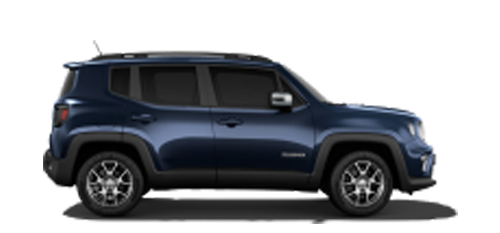
R510,900
Jeep® Models
Understanding the Combined Cycle measurement:
All vehicles are tested to the same test procedure (drive cycle) under carefully controlled conditions in specialised vehicle emission laboratories. The test methods used for determining exhaust emissions and fuel consumption are specified by the South African Bureau of Standards (SABS). The same drive cycle is used for determining air pollutant emissions and fuel consumption. Locally, we adopt the test methods from the United Nations ECE Regulations (ECE R83 and ECE R101).
The results displayed on the fuel consumption labels are based on a standardised drive cycle. However, no test can simulate all possible combinations of conditions that may be experienced on the road. Real world emissions and fuel consumption may vary from the results provided depending upon a number of factors including driving and road conditions, driver behaviour and the condition of the vehicle.
Tips and guidance on how motorists can obtain the best possible fuel efficiency from their vehicle.
Drive Smoothly
Aggressive driving can use as much as a third more fuel compared to conservative driving. Avoid accelerating or braking too hard, and try to keep the steering action as smooth as possible.
Use Higher Gears
The higher the gear, the lower the engine speed. This can improve fuel efficiency, so use the highest gear appropriate, without causing the engine to labour at an ultra-low rpm. Automatic transmission vehicles will upshift through the gears more quickly and smoothly if the driver eases back slightly on the accelerator when the car has gathered sufficient momentum.
Tune and Service the Engine
A well tuned engine can improve fuel economy by up to four percent. Change the oil and always follow the car manufacturer’s recommendation on servicing.
Keep the Tyres at the Correct Pressure
Correctly inflated tyres are safer and last longer, and they also reduce the amount of energy required to keep the vehicle rolling. A tyre that is under inflated by just 69 millibar (one psi) can reduce fuel efficiency by as much as three percent.
Avoid Carrying Excess Weight
For every extra 45 kilograms (100 pounds) carried in a vehicle, the fuel efficiency can drop by two percent, so keep the trunk and rear seat clear of any unnecessary items that just add weight to the vehicle.
Take the Roof Rack Off
If the roof rack or roof bars are not being used, then remove them. They adversely affect the aerodynamic efficiency of the vehicle and create drag, reducing fuel economy by as much as five percent.
Use the Correct Engine Oil
Always use the recommended grade of motor oil. Using the manufacturer’s recommended lubricant can improve fuel efficiency by one or two percent. Higher quality motor oils can also help your engine operate more efficiently.
| model | comparative fuel consumption1 | comparative c02 emissions |
|---|---|---|
| Jeep Renegade | ||
| 1.4L MT Sport | 6,0 | 137 |
| 1.4L AT Longitude | 5,9 | 137 |
| 1.4L AT Limited | 5,9 | 137 |
| 2.4L AT Trailhawk | 7,5 | 175 |
| Jeep Compass | ||
| 1.4L MT Longitude | 5,9 | 179 |
| 1.4L MY Limited | 5,9 | 179 |
| 2.4L AT Trailhawk | 9,6 | 230 |
| Jeep Cherokee | ||
| 2.0L AT Limited | 7,2 | 207 |
| 2.0L AT Trailhawk | 7,6 | 215 |
| 3.2L AT Overland | 7,3 | 216 |
| Jeep Grand Cherokee | ||
| 3.6L V6 Limited | 10,4 | 244 |
| 3.6L V6 Overland | 10,4 | 244 |
| 3.6L V6 Trailhawk | 10,4 | 244 |
| 6.4L V8 SRT | 13,5 | 315 |
| 6.2L V8 Trackhawk | 16,8 | 385 |
| 3.0L V6 AT | 7,8 | 205 |
| Jeep Wrangler 2Dr | ||
| 3.6L V6 AT 4x4 Sport | 9,6 | 233 |
| 3.6L V6 AT 4x4 Sahara | 9,6 | 233 |
| 3.6L V6 AT 4x4 Rubicon | 10,1 | 235 |
| Jeep Wrangler 4Dr | ||
| 3.6L V6 AT 4x4 Sport | 9,7 | 225 |
| 3.6L V6 AT 4x4 Sahara | 9,7 | 225 |
| 3.6L V6 AT 4x4 Rubicon | 10,3 | 239 |

Outside RSA +27 10 252 5000
Contact our Jeep® customer service

Tweet for @Jeep_SA or use this hashtag to be in touch with your community. #JeepLife
©2021 Stellantis South Africa. All Rights Reserved. Chrysler, Jeep®, Dodge, Ram, Mopar and the Pentastar logo
are registered trademarks of Stellantis.
Alfa Romeo and Fiat are registered trademarks of Stellantis, used with permission.
The Manufacturers Recommended Retail Price (MRRP) excludes destination and registration fees. Starting from price refers to the base model, optional equipment is not included. A more expensive model may be shown on the image.
Pricing and offers may change at any time without notification. To get full pricing and specfication details of your preferred model, see your dealer.